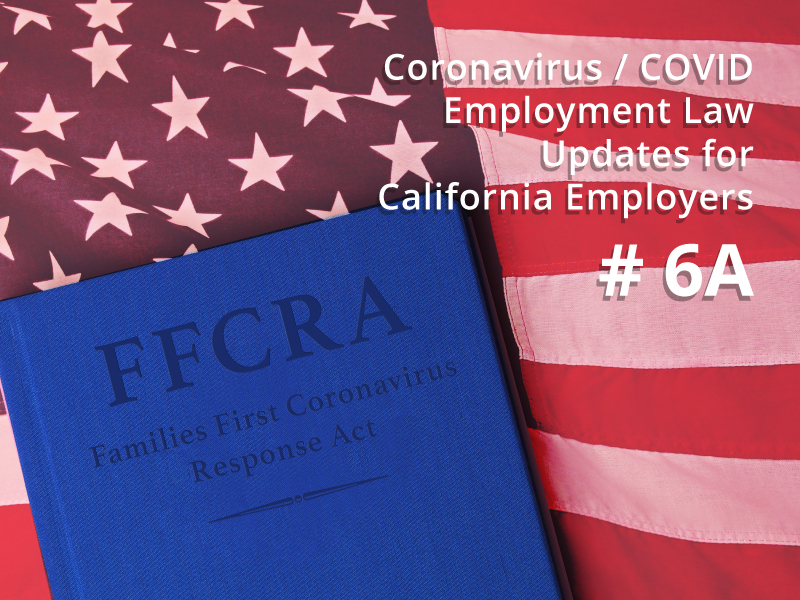Hello and welcome to installment # 6A of our posts on COVID-19 / Coronavirus issues related to employment law. Check out the other posts and our updated resources page on the blog.
Yesterday, the U.S. Department of Labor issued a second round of FAQs and Guidance on the Families First Coronavirus Response Act (FFCRA). That’s the law that expands the FMLA to cover childcare leave for most employees affected by school closings and unavailable caregivers. FFCRA also provides for paid sick leave. Read our initial analysis of the statute here.
The DOL’s new guidance adds on to the FAQs on its COVID-19 / FFCRA special web page here. We posted about the DOL’s initial guidance here.
The new information (questions 17 and on) addresses some important matters such as:
- Intermittent FFCRA-FMLA / sick leave for COVID-related childcare is available, but only if the employer allows it, and only if the employee is teleworking. “You may take intermittent leave in any increment, provided that you and your employer agree.” – Q20. Q21 addresses the telework v. office work issue.
- No paid leave is available to employees laid off if the employer closed the worksite before April 1, 2020. Q 23.
- After the April 1 effective date, paid leave ceases in the case of an employer closing, or implementing a layoff of an employee, while an employee is on leave; however, the employee is due payment for any qualifying leave taken before the closure. Q 25, 26. The answer is the same whether the closing / layoff is temporary or permanent. The DOL points out that the employee may be entitled to unemployment benefits rather than leave payments.
- Employees may not “pyramid” other forms of paid leave (such as PTO or employer sick time) on top of the paid federal leave, over and above 100% of their compensation. The DOL takes the position that the employer must agree to any coordination of employer paid leave and federal paid leave. Q31. However, if state or local law requires employers to allow the use of PTO or paid sick leave, employers should check with counsel regarding how to proceed.
- Employers may not require the employee to add PTO/employer provided benefits to federal leave benefits. Only the employee may elect to do so. Q33.
It is important to note that the DOL’s guidance, helpful as it may be, is not binding on the courts. The website, FAQs, and fact sheets are not regulations. So, the courts are not required to follow them. the statute itself is the only binding authority thus far. And, frankly, some of the DOL’s positions are not addressed in the statute. Therefore, some of the DOL guidance may turn out to be inconsistent with the statute, as interpreted by a court. For now, though, this is the only guidance we have. So, be careful out there.



 Trending
Trending